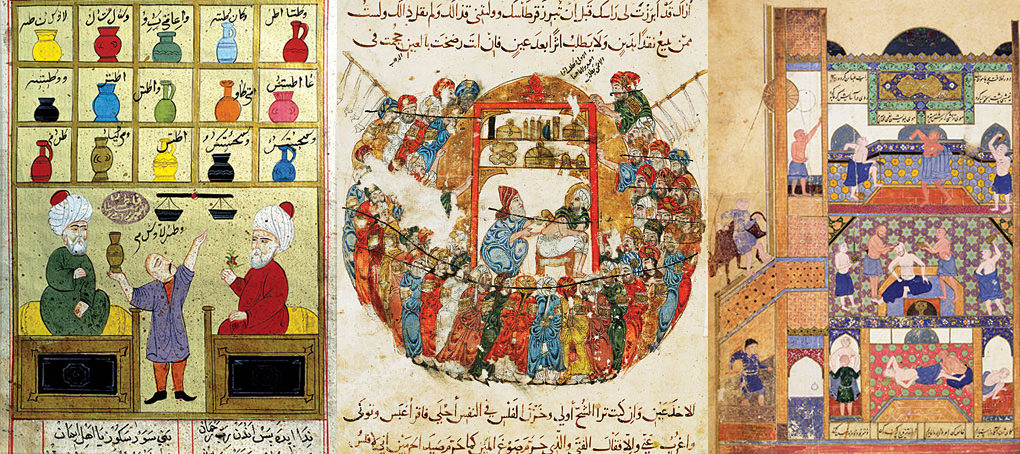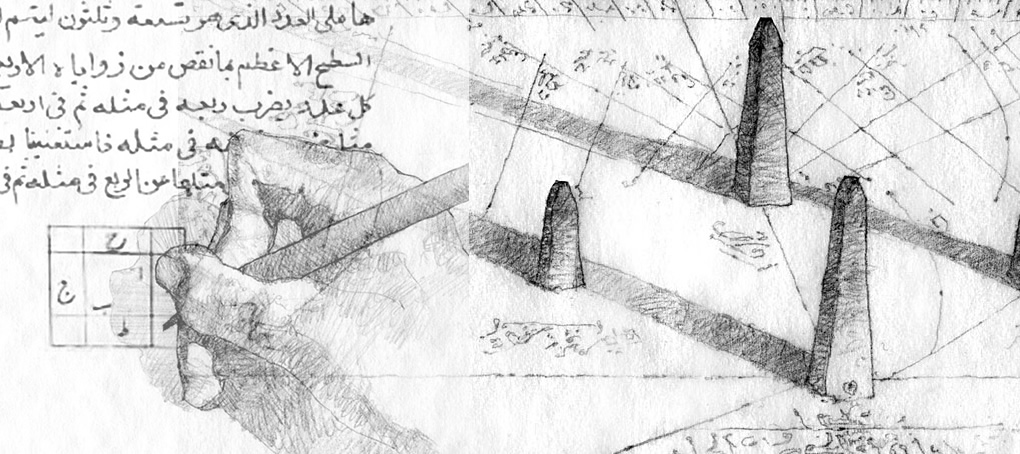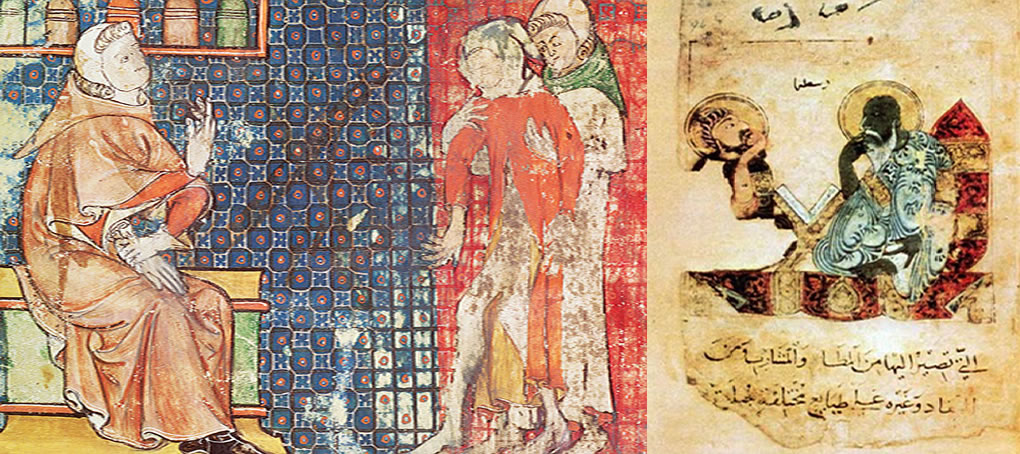Fabulous Hegemonies
|
After the death of Prophet Muhammad the first four successors, the Rashidum Caliphs, led a continuation of the political and religious system established by the Prophet. The Caliphate became a vast Empire incorporating the Eastern Byzantine provinces and overthrowing the Sassanid Empire. Umayyads (661-750) In 661 the Caliphate turned to the hands of the Umayyad dynasty and Damascus was established as the Muslim capital. They were proud of their Arab ancestry and sponsored the poetry and culture of pre-Islamic Arabia. Arabic was established as the Caliphate's official language, a reform that greatly influenced the conquered non-Arab peoples and fueled the Arabization of the region. By the mid-8th century, the Umayyad Arab-Muslim caliphate, with its seat in Damascus, had replicated much of the old Roman Empire around the Mediterranean, plus Arabia, Persia, Central Asia, and North India. In 751 discontent with the Umayyads led a large scale uprising by the Abbasids, that ended their rule throughout their Empire. However the sole surviving Umayyad teenaged heir, Abd al Rahman, escaped across the Strait of Gibraltar in 756, seized the land of Al Andalus and put his capital at Cordoba. Abbasids (750-1513) The new rulers, the Abbasids moved their capital to Baghdad. The first three centuries of the Abbasid dynasty were the Golden Age of Arab Islamic culture, when literature, philosophy and science flourished incorporating translation works by ancient authors. This felicitous era was finally put to an end by the Mongols who conquered Baghdad in 1258. Members of the Abbasid royal family who escaped the massacre, resorted to Cairo, where they were continued to patronize, science, arts and literature. Fatimids (909-1169) In the tenth to twelfth centuries, the area including present-day Algeria, Tunisia, Sicily, Egypt, and Syria came under the rule of the Fatimid dynasty. The Fatimids founded the city of Cairo (al-Qahira, "the triumphant") and established it, as their new capital. Control of the trade routes linking the Mediterranean with India, resulted in an economic flourishing which along with the varied tradition of Pharaonic Egypt and the Greco-Roman heritage transformed Cairo to a major cultural center that soon rivaled Baghdad. In that Islamic golden age scientific and intellectual achievements blossomed. Philosophers, artists, scientists and engineers of the Islamic world contributed enormously to technology, art literature, science and culture both by preserving earlier inherited traditions knowledge and skills of the ancient Middle East, Greece and Persia and by adding their own inventions and innovations. |



